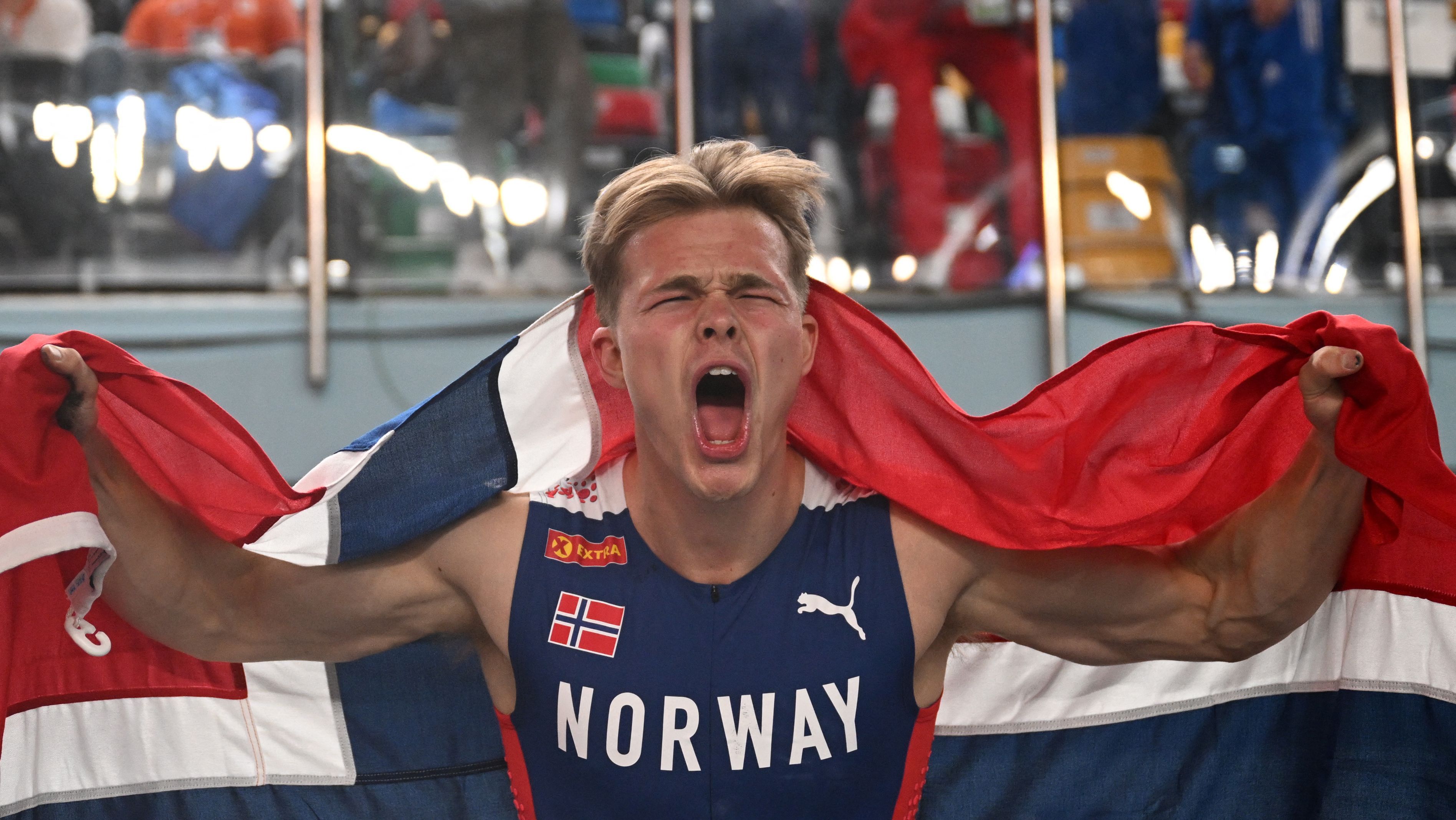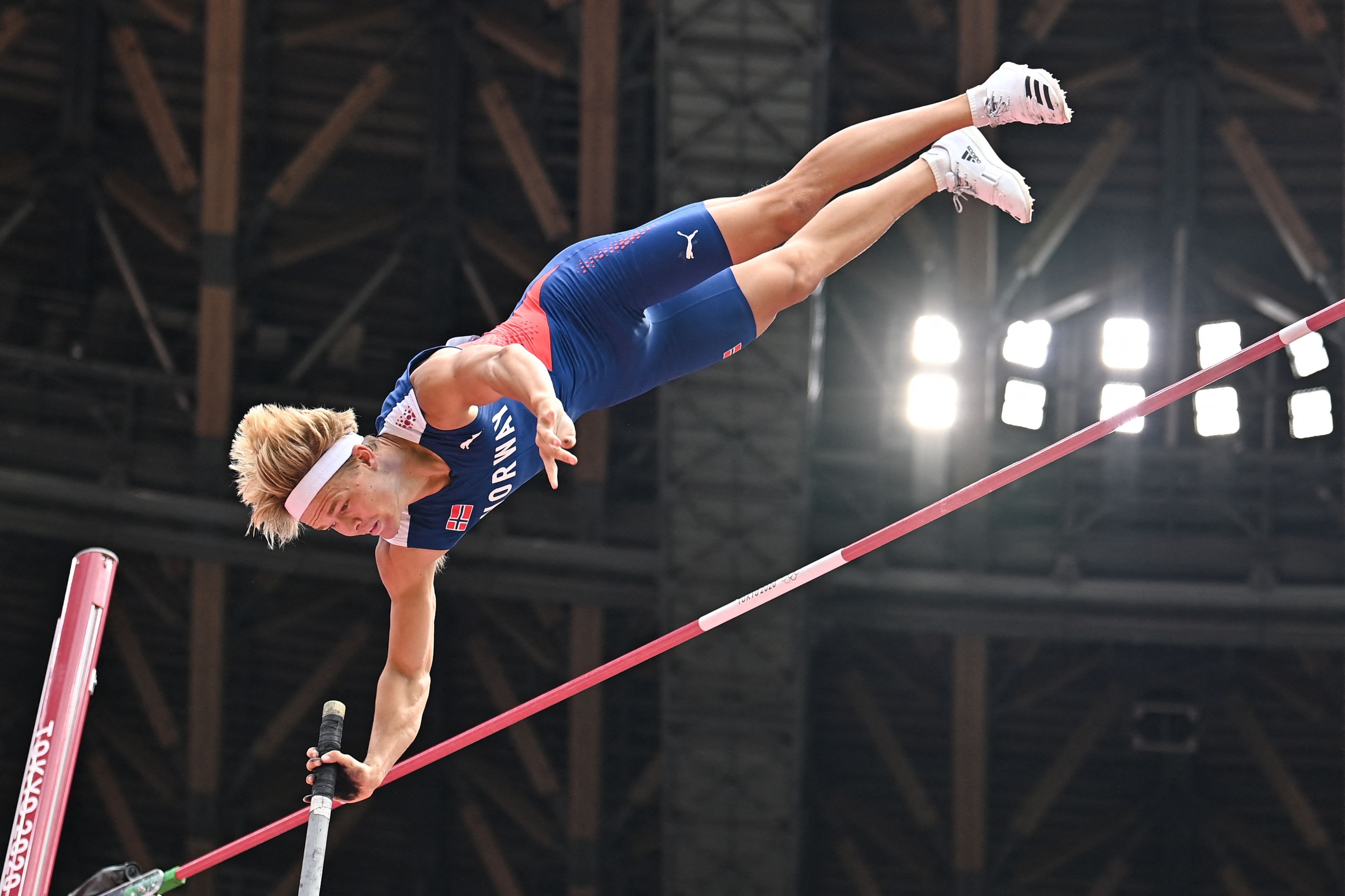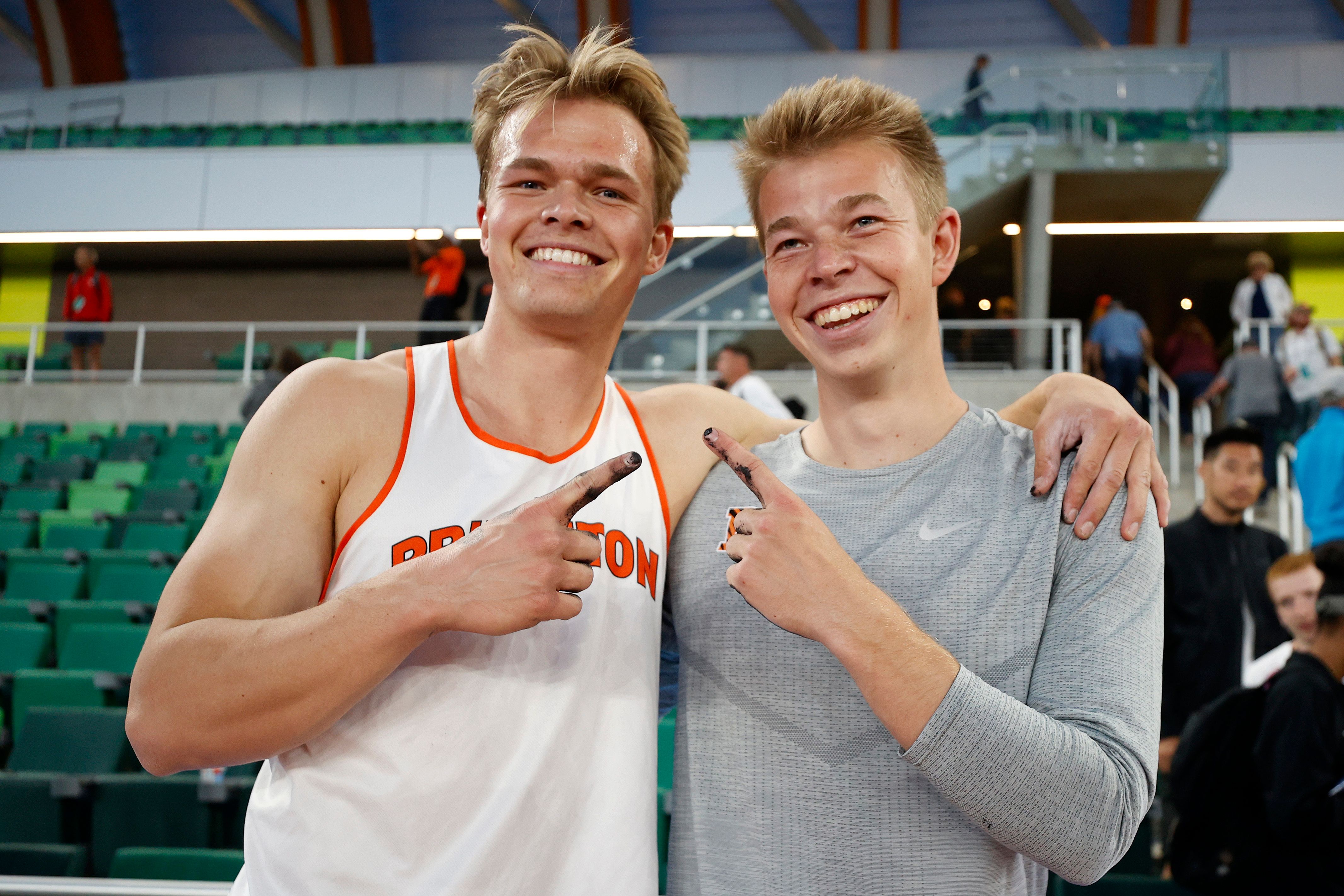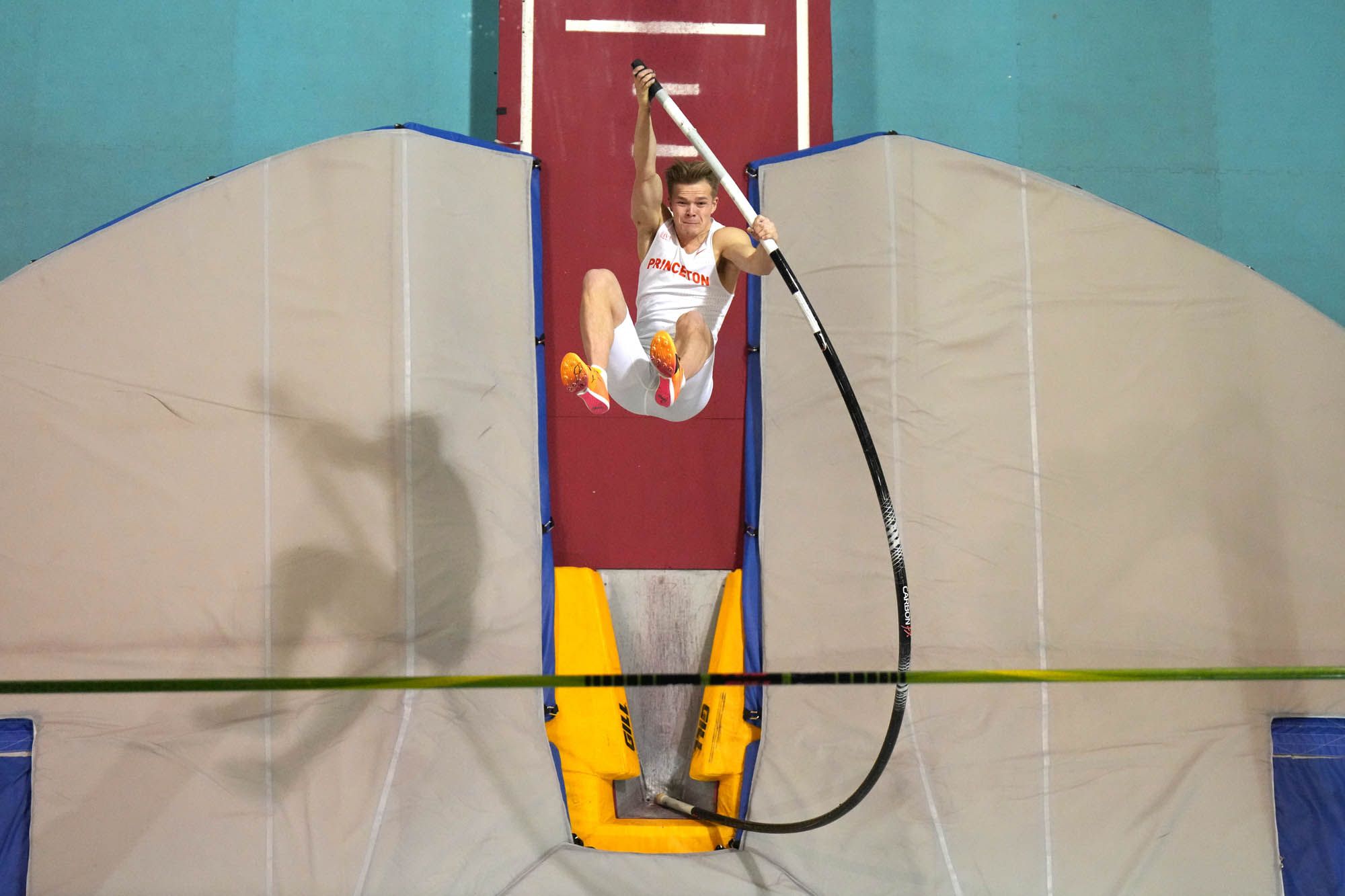Norwegian pole vaulter Sondre Guttormsen competes in Oregon (© AFP / Getty Images)
It comes down to physics – a simple, yet also deeply complex, equation of angles that need to be hit, of speed, strength and power metrics that need to be reached, to hoist yourself more than six metres in the air, up and over a horizontal bar.
A recent inductee to that club is Sondre Guttormsen, who soared over a Norwegian record of 6.00m to win the NCAA indoor pole vault title in March, just five days after he claimed the European indoor title in Istanbul.
The 24-year-old, who recently graduated from the University of Princeton, has lofty goals for this season. At the World Athletics Championships Budapest 23, he wants a medal, though competing in the era he does means gold might not be up for grabs.
“I think if I have a perfect day and everything goes well until then, silver is possible,” he says. “Everybody's really good but there are five really, really good guys. I think any of those can be in the top three.”

Sondre Guttormsen celebrates his European indoor title win in Istanbul (© AFP / Getty Images)
Guttormsen, like most male vaulters, knows that if Mondo Duplantis shows up as his usual, superlative self, then he will likely prove unbeatable. But when Guttormsen looks at Duplantis, the outlier among outliers, he knows there are certain areas he can match the 23-year-old world record-holder, as well as certain areas he can’t.
“He's insanely fast, so much faster than everybody else that it's almost like he should have jumped even higher,” he says. “I don't think he jumps perfect. If I do certain things a little bit better than him, I can be a little bit slower and still jump close to the same heights.”
Speed is one essential component. Guttormsen uses lasers to measure his take-off speed, which is about 9.8 metres per second. He estimates Duplantis hits around 10.1.
“I think I have the speed on the runway to jump 6.10m, maybe not 6.20m – yet.”
Then there are the technical elements, which Guttormsen knows can still improve.
“You see Sam Kendricks, he’s like a perfect pike over the bar,” he says. “I'm not near that. I'm flat over the bar. It's kind of fun seeing a six-metre jump that is far from perfect. That means I can make it a whole lot better.”
That process of steady improvement has been going on for 15 years.
Guttormsen first picked up a pole at the age of eight, and by 10 or 11 he was vaulting weekly. “After that, it just became like an obsession,” he says.

Sondre Guttormsen in action at the Olympic Games in Tokyo (© AFP / Getty Images)
He grew up in Ski, a town just over 20km from Oslo, and his family is steeped in athletics. His father, Atle, was a national-level hurdler, while his three siblings also pole vault.
As a kid, Guttormsen followed the typical Norwegian approach, trying various sports – from handball to gymnastics to soccer and just about every event in athletics. But through his teenage years, the pole vault had his heart, and it was an event he juggled with sprint hurdles for many years. In 2016, at the age of 17, he cleared five metres for the first time and went on to win bronze at the European U18 Championships.
Having spent 2011 and 2017 in the US, due to his father – an economics professor – doing a stateside sabbatical, the NCAA seemed a natural path, and Guttormsen spent a year studying at UCLA before transferring to Princeton in 2020. In 2021, he cleared 5.81m and booked his spot at the Tokyo Olympics, where a quad injury led to him being well off his best and eliminated in qualification.
Last year, Guttormsen won the NCAA indoor and outdoor titles before finishing 10th in the world pole vault final in Oregon with 5.70m, then he cleared a PB of 5.86m to finish second at the Wanda Diamond League final in Zurich. This year, he envisioned far greater heights, and that has come true.
“It never goes that way normally,” he says.
Growing up, Guttormsen used to devour YouTube videos of great vaulters, studying in detail Sergey Bubka, whose technical model is followed by so many modern athletes. Does he base his technique on Bubka?
“I guess it's just Sondre-based,” he laughs. “I think there's aspects of the jump that I look at Bubka. He was definitely the one I looked at from a young age, but it's changed a bit. You figure out what works well for your jump.”
Guttormsen’s coaching setup also goes against the grain, with his younger brother Simen overseeing most of his sessions. Simen, 22, is a 5.72m vaulter and also studies at Princeton, with the pair graduating this year.

Sondre and Simen Guttormsen (© Getty Images)
“We had people helping us, writing all our programmes like lifting and structuring our week, but then the day-to-day pole vaulting, it's really him watching me and I watch him,” says Sondre.
At first they would train at the same time, advising each other with technical feedback, but it “didn’t really work” so later they agreed to do consecutive sessions, with one serving as coach each time.
“It is unusual, but I have had the best season so far,” says Sondre. “So yeah, it's been working.”
Given his breakthrough, the world of professional athletics will inevitably come calling, but as things stand Guttormsen doesn’t plan to leave the NCAA behind yet. He has committed to the University of Texas next year, where he’s been accepted into graduate school for sports management.
Might he be tempted to turn pro before that?
“If someone gives you an offer that's too good to turn down, then I think it's a no-brainer, but for now my plan is to go to Texas.”
At Princeton he studied psychology, with his thesis titled: ‘Get off your phone - a cognitive dissonance approach to reduce social media behaviour.’ His findings were in line with what many might suspect, that “we’d all be better off using our phones less.”

Sondre Guttormsen in the pole vault at the NCAA Indoor Championships (© Kirby Lee)
As he looks to the future, Guttormsen plans to do “mostly pole vaulting” for the “next 10 years” before choosing his future career path. With the Olympics just a year away, he’s reminded of the Games daily via the five rings that adorn his silver necklace.
“I’m trying to not think too much about it,” he says. “I'm training really hard for it and that's really all I can do. The competitions will prepare me mentally and physically for all the emotions and nerves that are going to be in Paris.”
Next up is his national championships, in Jessheim this weekend, and beyond that further six-metre clearances are his aim.
He knows that’s within his range right now, but Guttormsen’s analytical mind also tells him much more is possible in the future.
“It's realistic that I can jump 6.20m when you're looking at the numbers,” he says.
The arrival of Duplantis could be seen as a negative for this generation of vaulters, given the standard now required to win gold, but Guttormsen sees it differently as he thinks about what’s possible in the years ahead.
“Before I was like: ‘Six metres is huge, it’s insane,’” he says. “But seeing Mondo jumping 6.22m you (think): ‘He's not the only one that can do it.’”
Cathal Dennehy for World Athletics




